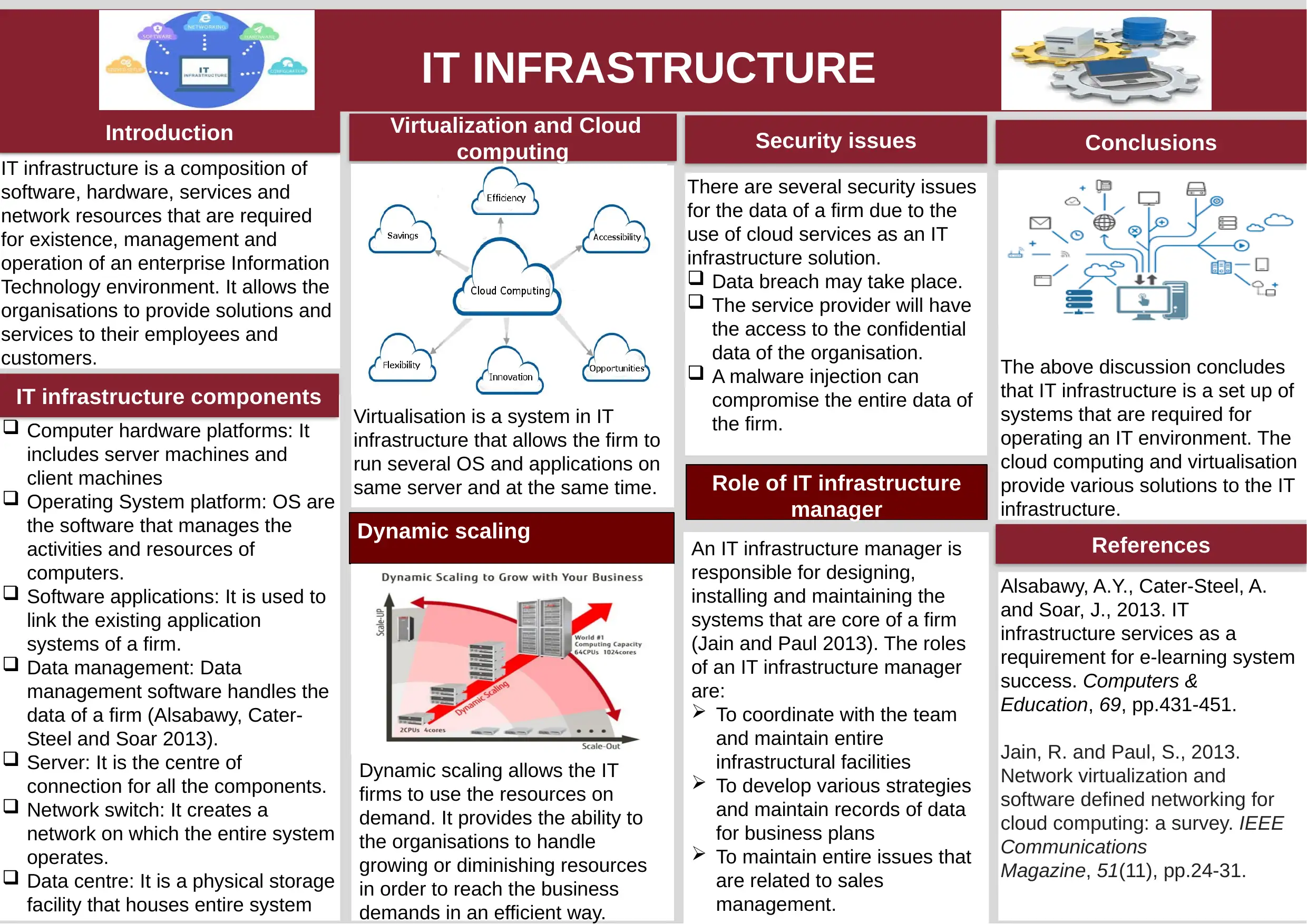Comprehensive Report on IT Infrastructure: Components and Security
VerifiedAdded on 2023/06/07
|1
|476
|476
Report
AI Summary
This report provides an overview of IT infrastructure, defining it as a composition of software, hardware, services, and network resources essential for managing an enterprise's IT environment. It highlights key components such as computer hardware platforms, operating systems, software applications, data management systems, servers, network switches, and data centers. The discussion extends to virtualization and cloud computing, emphasizing dynamic scaling and its benefits for resource management. The report also addresses critical security issues associated with cloud services, including data breaches and malware injections. Furthermore, it outlines the roles and responsibilities of an IT infrastructure manager in designing, installing, and maintaining core systems, coordinating with teams, developing strategies, and managing sales-related issues. The report concludes that IT infrastructure is a vital setup for operating an IT environment, with cloud computing and virtualization offering significant solutions.





![[object Object]](/_next/static/media/star-bottom.7253800d.svg)